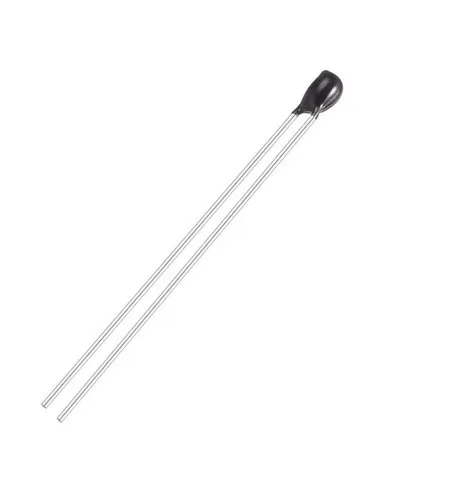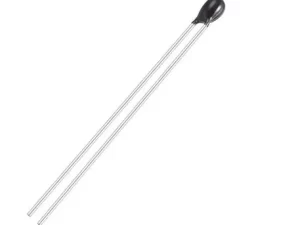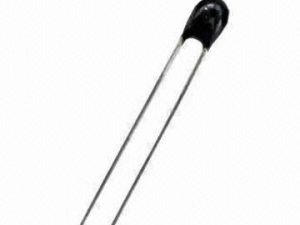Description
Getting started with The Thermistor NTC 100K
In this tutorial you will learn how to use this thermistor NTC with Arduino Uno. The room temperature will be displayed on the serial monitor
Hardware required
- Arduino UNO
- Thermistor 100k NTC
- Jumper wires
- Resistor 100k
- Breadboard
How a thermistor NTC Works
Thermistors are variable resistors that change their resistance with temperature. They are classified by the way their resistance responds to temperature changes. In Negative Temperature Coefficient (NTC) thermistors, resistance decreases with an increase in temperature. The value of the resistor should be roughly equal to the resistance of your thermistor. In this case, the resistance of my thermistor is 100K Ohms, so my resistor is also 100K Ohms.
Connecting the Hardware

Upload the sample sketch
//Thermometer with thermistor
/*thermistor parameters:
* RT0: 10 000 Ω
* B: 3977 K +- 0.75%
* T0: 25 C
* +- 5%
*/
//These values are in the datasheet
#define RT0 10000 // Ω
#define B 3977 // K
//————————————–
#define VCC 5 //Supply voltage
#define R 10000 //R=10KΩ
//Variables
float RT, VR, ln, TX, T0, VRT;
void setup() {
Serial.begin(9600);
T0 = 25 + 273.15; //Temperature T0 from datasheet, conversion from Celsius to kelvin
}
void loop() {
VRT = analogRead(A0); //Acquisition analog value of VRT
VRT = (5.00 / 1023.00) * VRT; //Conversion to voltage
VR = VCC – VRT;
RT = VRT / (VR / R); //Resistance of RT
ln = log(RT / RT0);
TX = (1 / ((ln / B) + (1 / T0))); //Temperature from thermistor
TX = TX – 273.15; //Conversion to Celsius
Serial.print(“Temperature:”);
Serial.print(“\t”);
Serial.print(TX);
Serial.print(“C\t\t”);
Serial.print(TX + 273.15); //Conversion to Kelvin
Serial.print(“K\t\t”);
Serial.print((TX * 1.8) + 32); //Conversion to Fahrenheit
Serial.println(“F”);
delay(500);
}
The result of working circuit
Upload the program to the Arduino board and then open the serial monitor. If it works correctly you should get the temperature room on the serial monitor.







Reviews
There are no reviews yet.